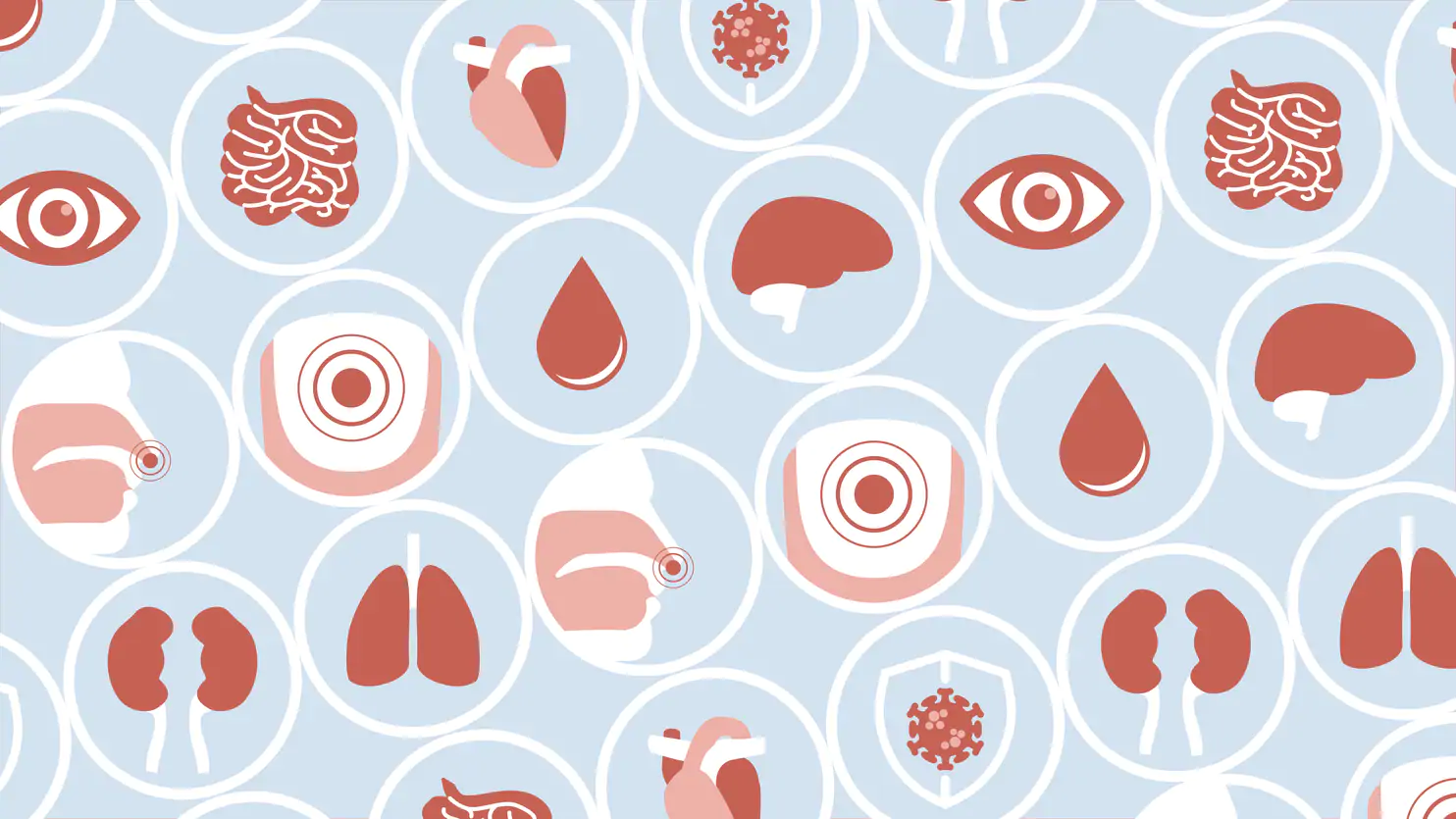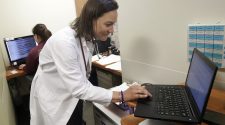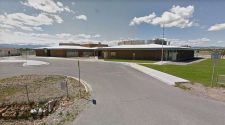Deborah Coughlin was neither short of breath nor coughing. In those first days after she contracted the novel coronavirus, her fever never spiked above 100 degrees. It was vomiting and diarrhea that brought her to a Hartford, Conn., emergency room on May 1.
“You would have thought it was a stomach virus,” said her daughter, Catherina Coleman. “She was talking and walking and completely coherent.”
But even as Coughlin, 67, chatted with her daughters on her cellphone, the oxygen level in her blood dropped so low that most patients would be near death. She is on a ventilator and in critical condition at St. Francis Hospital, one more patient with an increasingly diverse constellation of symptoms physicians are racing to recognize, explain and treat.
“At the beginning, we didn’t know what we were dealing with,” said Valentin Fuster, physician-in-chief at Mount Sinai Hospital in New York City, the epicenter of the U.S. outbreak. “We were seeing patients dying in front of us. It was all of a sudden, you’re in a different ballgame, and you don’t know why.”
Today, there is widespread recognition the novel coronavirus is far more unpredictable than a simple respiratory virus, one with the potential to attack from the brain to the toes. Many doctors are focused on treating the inflammatory reactions it triggers and its capacity to cause blood clots as they struggle to help their patients breathe.
Learning about a new disease on the fly, with more than 78,000 U.S. deaths attributed to the pandemic, they have little solid research to guide them, although the World Health Organization’s database already lists more than 14,600 papers on covid-19. Even the world’s premier public health agencies, including the Centers for Disease Control and Prevention, have constantly altered their advice to keep pace with new developments.
[Sign up for our Coronavirus Updates newsletter to track the outbreak. All stories linked in the newsletter are free to access.]
“We don’t know why there are so many disease presentations,” said Angela Rasmussen, a virologist at the Center for Infection and Immunity at Columbia University’s Mailman School of Public Health. “Bottom line, this is just so new that there’s a lot we don’t know.”
More than four months of clinical experience across Asia, Europe and North America has shown the pathogen does much more than invade the lungs. “No one was expecting a disease that would not fit the pattern of pneumonia and respiratory illness,” said David Reich, a cardiac anesthesiologist and president of Mount Sinai Hospital in New York City.
It attacks the heart, weakening its muscles and disrupting its critical rhythm. It savages kidneys so badly some hospitals have run short of dialysis equipment. It crawls along the nervous system, destroying taste and smell and occasionally reaching the brain. It creates blood clots that can kill with sudden efficiency and inflames blood vessels throughout the body.
It can begin with a few symptoms or none at all, then days later, squeeze the air out of the lungs without warning. It picks on the elderly, people weakened by previous disease, and, disproportionately, the obese. It harms men more than women, but there are also signs it complicates pregnancies.
Symptoms of covid-19 appear to include:
- Symptoms of covid-19 appear to include:
It mostly spares the young. Until it doesn’t: Last week, doctors warned of a rare inflammatory reaction with cardiac complications among children that may be connected to the virus. On Friday, New York Gov. Andrew M. Cuomo (D) announced 73 children had fallen severely ill in the state and a 5-year-old boy in New York City had become the first child to die of the syndrome. Two more children had succumbed as of Saturday.
That news has shaken many doctors, who felt they were finally grasping the full dimensions of the disease in adults. “We were all thinking this is a disease that kills old people, not kids,” Reich said.
Mount Sinai has treated five children with the condition. Reich said each started with gastrointestinal symptoms, which turned into inflammatory complications that caused very low blood pressure and expanded their blood vessels. This led to heart failure in the case of the first child who died.
“The pattern of disease was different than anything else with covid,” he said.
 “We were all thinking this is a disease that kills old people, not kids,” said David Reich, president of Mount Sinai Hospital in Manhattan. (Jeenah Moon/Reuters)
“We were all thinking this is a disease that kills old people, not kids,” said David Reich, president of Mount Sinai Hospital in Manhattan. (Jeenah Moon/Reuters) Of the millions, perhaps billions, of coronaviruses, six were previously known to infect humans.
Four cause colds that spread easily each winter, barely noticed. Another was responsible for the outbreak of severe acute respiratory syndrome that killed 774 people in 2003. Yet another sparked the outbreak of Middle East respiratory syndrome in 2012, which kills 34 percent of the people who contract it. But few do.
SARS-CoV-2, the bad seed of the coronavirus family, is the seventh. It has managed to combine the infectiousness of its cold-causing cousins with some of the lethality of SARS and MERS. It can spread before people show symptoms of disease, making it difficult to control, especially without widespread and accurate testing. At the moment, social distancing is the only effective countermeasure.
It has infected 4 million people around the globe, killing more than 280,000, according to the Johns Hopkins University Coronavirus Resource Center. In the United States, 1.3 million have been infected and more than 78,000 have died.
Had SARS or MERS spread as widely as this virus, Rasmussen said, they might have shown the same capacity to attack beyond the lungs. But they were snuffed out quickly, leaving only a small sample of disease and death.
 Paramedics bring home a woman with covid-19 who underwent an emergency C-section because she was gravely ill. After extensive care, including time on a ventilator, she was released from a hospital in Stamford, Conn., and she has a healthy newborn. (John Moore/Getty Images)
Paramedics bring home a woman with covid-19 who underwent an emergency C-section because she was gravely ill. After extensive care, including time on a ventilator, she was released from a hospital in Stamford, Conn., and she has a healthy newborn. (John Moore/Getty Images) Trying to define a pathogen in the midst of an ever-spreading epidemic is fraught with difficulties. Experts say it will be years until it is understood how the disease damages organs and how medications, genetics, diets, lifestyles and distancing impact its course.
“This is a virus that literally did not exist in humans six months ago,” said Geoffrey Barnes, an assistant professor at the University of Michigan who works in cardiovascular medicine. “We had to rapidly learn how this virus impacts the human body and identify ways to treat it literally in a time-scale of weeks. With many other diseases, we have had decades.”
In the initial days of the outbreak, most efforts focused on the lungs. SARS-CoV-2 infects both the upper and lower respiratory tracts, eventually working its way deep into the lungs, filling tiny air sacs with cells and fluid that choke off the flow of oxygen.
But many scientists have come to believe that much of the disease’s devastation comes from two intertwined causes.
The second is an exaggerated response from the body’s own immune system, a storm of killer “cytokines” that attack the body’s own cells along with the virus as it seeks to defend the body from an invader.
Research and therapies are focused on these phenomena. Blood thinners are being more widely used in some hospitals. A review of records for 2,733 patients, published Wednesday in the Journal of the American College of Cardiology, indicates they may help the most seriously ill.
“Things change in science all the time. Theories are made and thrown out. Hypotheses are tweaked. It doesn’t mean we don’t know what we are doing. It means we are learning,” said Deepak Bhatt, executive director of interventional cardiology at Brigham and Women’s Hospital in Boston.
Inflammation of those endothelial cells lining blood vessels may help explain why the virus harms so many parts of the body, said Mandeep Mehra, a professor of medicine at Harvard Medical School and one of the authors of the Lancet study on how covid-19 attacks blood vessels.
That means defeating covid-19 will require more than antiviral therapy, he said.
“What this virus does is it starts as a viral infection and becomes a more global disturbance to the immune system and blood vessels — and what kills is exactly that,” Mehra said. “Our hypothesis is that covid-19 begins as a respiratory virus and kills as a cardiovascular virus.”
The thinking of kidney specialists has evolved along similar lines. Initially, they attributed widespread and severe kidney disease to the damage caused by ventilators and certain medications given to intensive-care patients, said Daniel Batlle, a professor of medicine at Northwestern University Feinberg School of Medicine.
Then they noticed damage to the waste-filtering kidney cells of patients even before they needed intensive care. And studies out of Wuhan found the pathogen in the kidneys themselves, leading to speculation the virus is harming the organ.
“There was nothing unique at first,” Batlle said. But the new information “shows this is beyond the regular bread-and-butter acute kidney injury that we normally see.”
Like other coronaviruses, SARS-Cov-2 infiltrates the body by attaching to a receptor, ACE2, found on some cells. But the makeup of the spikes that protrude from this virus is somewhat different, allowing the virus to bind more tightly. As a result, fewer virus particles are required to infect the host. This also may help explain why this virus is so much more infectious than SARS, Rasmussen said.
Other factors can’t be ruled out in transmission, she said, including the amount of virus people shed and how strictly they observe social distancing rules.
Once inside a cell, the virus replicates, causing chaos. ACE2 receptors, which help regulate blood pressure, are plentiful in the lungs, kidneys and intestines — organs hit hard by the pathogen in many patients. That also may be why high blood pressure has emerged as one of the most common preexisting conditions in people who become severely ill with covid-19.
 A colorized scan of a cell (shown in red) infected with SARS-COV-2 virus particles (shown in yellow), isolated from a patient sample. (National Institute of Allergy and Infectious Diseases)
A colorized scan of a cell (shown in red) infected with SARS-COV-2 virus particles (shown in yellow), isolated from a patient sample. (National Institute of Allergy and Infectious Diseases) The receptors differ from person to person, leading to speculation that genetics may explain some of the variability in symptoms and how sick some people become.
Those cells “are almost everywhere, so it makes sense that the virus would cause damage throughout the body,” said Mitchell Elkind, a professor of neurology at Columbia University’s College of Physicians and Surgeons and president-elect of the American Heart Association.
Inflammation spurs clotting as white blood cells fight off infection. They interact with platelets and activate them in a way that increases the likelihood of clotting, Elkind said.
Such reactions have been seen in severe infections, such as sepsis. But for covid-19, he said, “we are seeing this in a large number of people in a very short time, so it really stands out.”
“The virus can attack a lot of different parts of the body, and we don’t understand why it causes some problems for some people, different problems for others — and no problems at all for a large proportion,” Elkind said.
Coughlin, in critical condition at a hospital in Connecticut, deteriorated quickly after she reached the emergency room. Her fever shot up to 105 and pneumonia developed in her lungs.
On Wednesday, she called her six daughters on FaceTime, telling them doctors advised she go on a ventilator.
“If something happens to me, and I don’t make it, I’m at peace with it,” she told them.
The conversation broke daughter Coleman’s heart.
“I am deciding to help her go on a ventilator, and she may never come off,” she said. “That could have been my last phone conversation with her.”
Illustrations from iStock. Edited by Carol Eisenberg. Photo editing by Nick Kirkpatrick. Copy-edited by Jennifer Anderson and Thomas Floyd. Design and development by Tyler Remmel.
Read more:
Coronavirus destroys lungs. But doctors are finding its damage in kidneys, hearts and elsewhere.
Young and middle-aged people, barely sick with covid-19, are dying of strokes
Children are falling ill with perplexing inflammatory syndrome thought to be linked to covid-19
A mysterious blood-clotting complication is killing coronavirus patients
Frostbite’ toes and other peculiar rashes may be signs of hidden coronavirus infection, especially in the young










-225x125.jpg)





